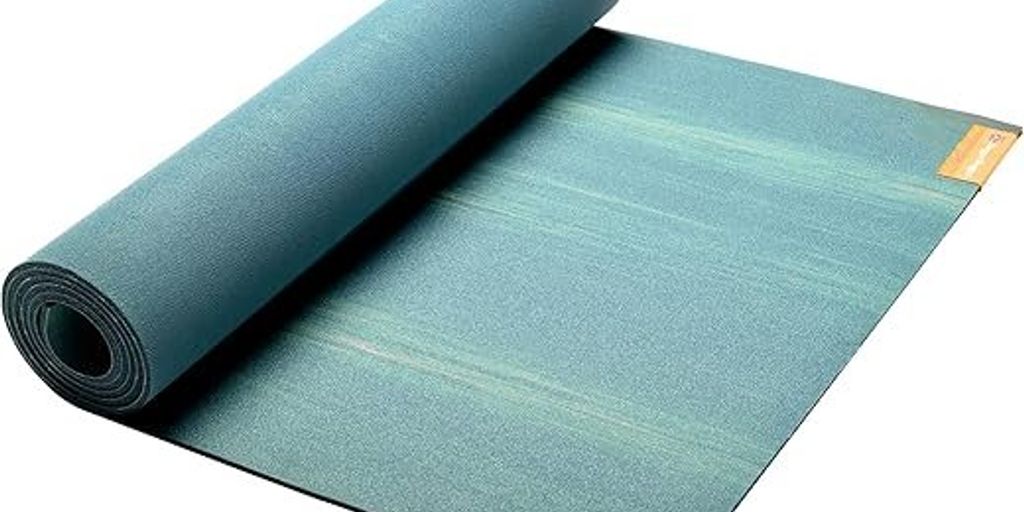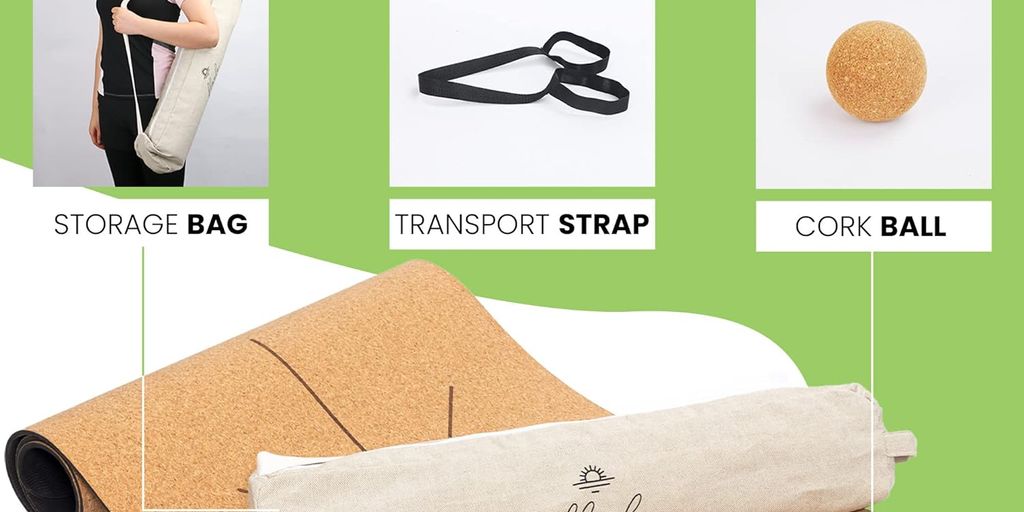
The Ultimate Guide to Choosing the Perfect Rubber Yoga Mat
Choosing the right yoga mat can make a big difference in your practice. Rubber yoga mats are a popular choice because they offer many benefits like being eco-friendly and durable. This guide will help you find the perfect rubber yoga mat by covering everything you need to know.
Key Takeaways
- Rubber yoga mats are eco-friendly and last a long time.
- The thickness of your mat can affect your joint health and how easy it is to carry.
- Natural rubber mats and synthetic rubber mats have different feels and environmental impacts.
- Proper care can make your rubber yoga mat last longer.
- Look for features like texture, size, and price when choosing a mat.
Benefits of Using a Rubber Yoga Mat
Eco-Friendly and Sustainable
Rubber yoga mats are a great choice for those who care about the environment. They are made from natural materials that break down over time, unlike plastic mats that can take hundreds of years to decompose. Choosing a rubber mat helps reduce waste and supports a healthier planet.
Durability and Longevity
One of the best things about rubber yoga mats is how long they last. These mats are tough and can handle a lot of wear and tear. This means you won't have to replace your mat as often, saving you money in the long run. Durability is a key feature that makes rubber mats a smart investment.
Superior Grip and Stability
When you're doing yoga, you need a mat that won't slip. Rubber mats offer excellent grip, even when you're sweating. This helps you stay stable in your poses and reduces the risk of injury. The superior grip of rubber mats makes them a favorite among many yoga practitioners.
A rubber yoga mat is not just a purchase; it's an investment in your practice and the environment.
How to Choose the Right Thickness for Your Rubber Yoga Mat
Understanding Different Thickness Levels
Choosing the right thickness for your rubber yoga mat can make a big difference in your practice. Mats generally range from 1/16 inch to 1/4 inch thick. Thinner mats are great for balance and stability, while thicker mats provide more cushioning for your joints.
Impact on Joint Health
Protecting your joints is crucial, especially if you have sensitive knees or wrists. A thicker mat can offer better support and reduce strain. However, if the mat is too thick, it might affect your balance.
Portability and Storage
When it comes to portability, thinner mats are easier to roll up and carry around. They also take up less space, making them ideal for small storage areas. On the other hand, thicker mats can be bulkier and heavier, which might be a hassle if you travel often.
Finding the right balance between thickness, comfort, and portability can enhance your yoga experience significantly.
Comparing Natural vs. Synthetic Rubber Yoga Mats
Material Composition
When choosing a yoga mat, it's important to understand the differences between natural and synthetic rubber. Natural rubber is made from the sap of rubber trees, making it a more eco-friendly option. On the other hand, synthetic rubber is created from petroleum-based materials, which can be less sustainable.
Performance and Feel
Natural rubber mats often provide a superior grip and a more comfortable feel. They tend to be more flexible and can offer better cushioning. Synthetic rubber mats, however, can be more durable and resistant to wear and tear. This makes them a good choice for those who practice yoga frequently.
Environmental Impact
Choosing between natural and synthetic rubber also involves considering the environmental impact. Natural rubber is biodegradable and comes from renewable resources, making it a greener choice. Synthetic rubber, while durable, is not biodegradable and can contribute to environmental pollution.
When deciding on a yoga mat, think about your personal values and how much you prioritize sustainability. This can help you make a choice that aligns with your lifestyle and beliefs.
In summary, both natural and synthetic rubber mats have their pros and cons. Natural rubber is better for the environment and offers a great feel, while synthetic rubber is more durable and long-lasting. Consider what matters most to you when making your decision.
Caring for Your Rubber Yoga Mat
Cleaning and Maintenance Tips
To keep your rubber yoga mat in top shape, regular cleaning is essential. Wipe down your mat after each use with a damp cloth to remove sweat and dirt. For a deeper clean, mix a solution of water and mild soap, then gently scrub the mat. Avoid using harsh chemicals as they can damage the rubber.
Storage Solutions
Proper storage can extend the life of your mat. Roll your mat loosely and store it in a cool, dry place. Avoid exposing it to direct sunlight for long periods, as this can cause the rubber to degrade. If you have limited space, consider using a mat bag or strap to keep it compact and protected.
Extending the Lifespan of Your Mat
To make your mat last longer, rotate it regularly to ensure even wear. Also, avoid wearing shoes on the mat to prevent tears and punctures. By following these simple steps, you can enjoy the benefits of your rubber yoga mat for years to come.
Taking good care of your rubber yoga mat not only ensures its longevity but also enhances your practice by providing a clean and stable surface.
Top Features to Look for in a Rubber Yoga Mat
Texture and Surface Design
When choosing a rubber yoga mat, pay attention to the texture and surface design. A good texture can prevent slipping and provide a stable base for your poses. Some mats have a smooth surface, while others have a more textured feel. Think about what works best for your practice.
Size and Dimensions
The size and dimensions of your mat are important. Standard mats are usually around 68 inches long, but if you're taller, you might need a longer mat. Make sure the width is enough to fit your body comfortably. Extra large mats are available for those who need more space.
Price and Value
Price is always a factor, but don't just go for the cheapest option. Look for a mat that offers good value for the price. This means considering the material, durability, and any extra features. Sometimes, spending a bit more upfront can save you money in the long run.
Remember, the right yoga mat can make a big difference in your practice. Take your time to find one that meets your needs and preferences.
Common Mistakes to Avoid When Buying a Rubber Yoga Mat
Overlooking Material Quality
One common mistake is not paying attention to the quality of the material. High-quality rubber mats offer better durability and comfort. Always check if the mat is made from natural or synthetic rubber, as this can affect its performance and environmental impact.
Ignoring Thickness and Comfort
Another error is ignoring the thickness of the mat. The right thickness can make a big difference in your practice. Thicker mats provide more cushioning, which is essential for joint health. However, they can be less portable. Consider your needs and choose accordingly.
Neglecting Personal Practice Needs
It's easy to forget your own practice needs when buying a mat. Think about the type of yoga you practice and your personal preferences. For example, if you do hot yoga, a mat with superior grip is crucial. Always align your choice with your practice style.
Remember, the perfect yoga mat should meet your specific needs and enhance your practice. Don't rush the decision; take your time to find the right one.
Where to Buy the Best Rubber Yoga Mats
Online Retailers
Shopping online offers a wide range of options for rubber yoga mats. You can easily compare prices and read reviews from other customers. Websites like Amazon, eBay, and specialized yoga stores provide detailed descriptions and user feedback. This helps you make an informed decision without leaving your home.
Specialty Yoga Stores
Visiting a specialty yoga store allows you to feel and test the mats before buying. These stores often have knowledgeable staff who can guide you in choosing the right mat for your needs. Plus, you might find exclusive brands and designs not available online.
Eco-Friendly Brands
If sustainability is important to you, consider buying from eco-friendly brands. These companies focus on producing mats that are both good for your practice and the planet. Look for brands that use natural materials and environmentally friendly processes. Supporting these brands helps promote a healthier planet.
For more tips on finding the perfect mat, check out a yoga blog: explore posts on yoga, meditation, fitness, and more. Find the right yoga mat size, hot yoga mat, mat spray, sandals, and cleaning guide.
Looking for the best rubber yoga mats? Check out our wide selection at Yune Yoga! We offer high-quality, eco-friendly mats that are perfect for any practice. Don't miss out on our latest collections and special offers. Visit our website today and find the perfect mat for you!
Conclusion
Choosing the perfect rubber yoga mat is all about finding what works best for you. Think about how thick you want it, how much it weighs, and how it feels when you use it. Also, consider if it's eco-friendly and easy to clean. Remember, the right mat can make your yoga practice more enjoyable and comfortable. Take your time, try out different mats, and soon you'll find the one that feels just right.
Frequently Asked Questions
What makes rubber yoga mats eco-friendly?
Rubber yoga mats are made from natural materials that break down over time, unlike plastic mats. This means they're better for the planet.
How thick should a yoga mat be?
The thickness of your yoga mat depends on your needs. Thicker mats are good for joint support, while thinner mats are easier to carry around.
How do I clean my rubber yoga mat?
You can clean your rubber yoga mat with a mix of water and mild soap. Wipe it down with a cloth and let it air dry.
What’s the difference between natural and synthetic rubber mats?
Natural rubber mats come from rubber trees, while synthetic ones are made from chemicals. Natural rubber is usually more eco-friendly.
Can I use my rubber yoga mat for other workouts?
Yes, rubber yoga mats can be used for other exercises like Pilates or stretching. They provide good grip and support.
Where can I buy a good rubber yoga mat?
You can buy rubber yoga mats online, at specialty yoga stores, or from brands that focus on eco-friendly products.


